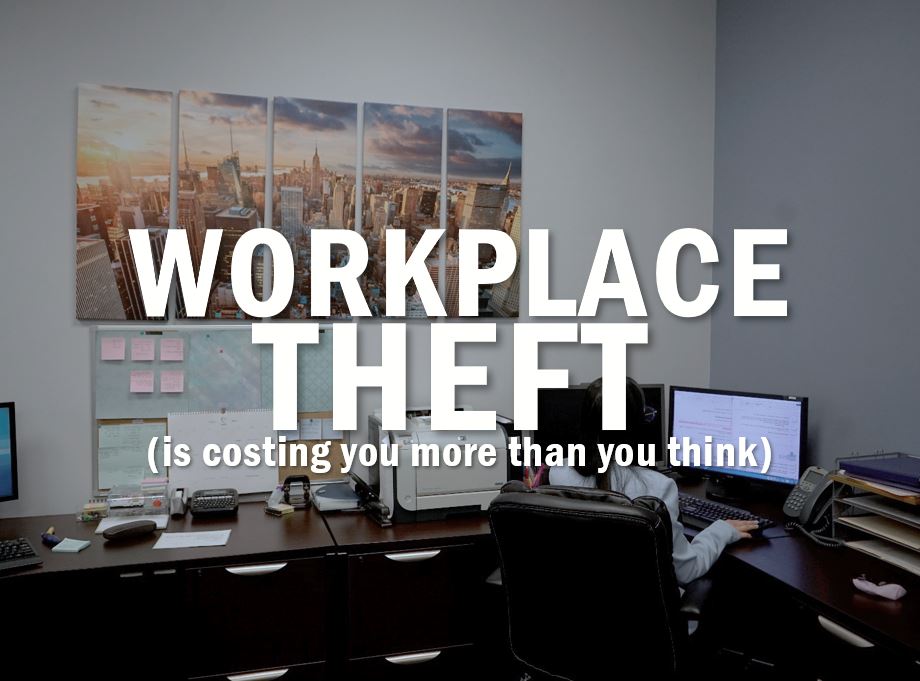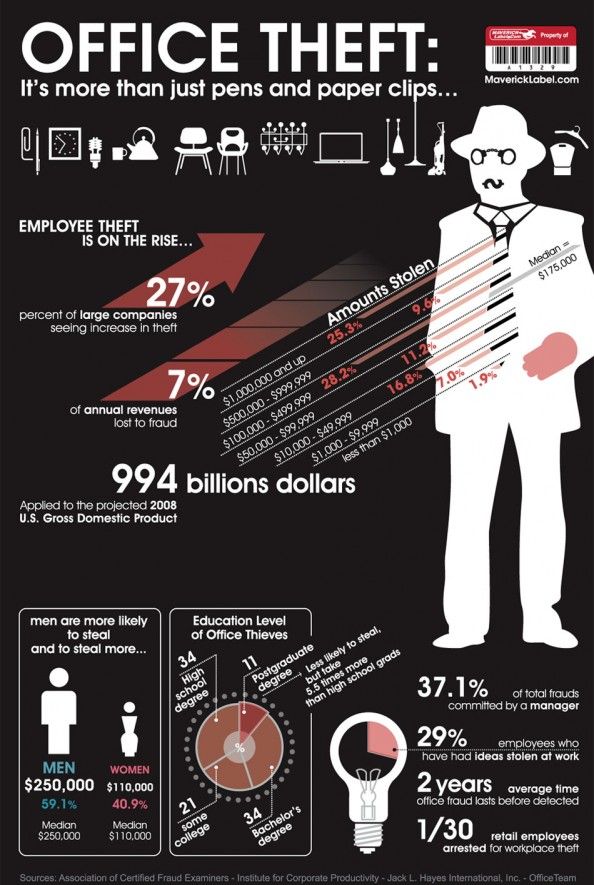
It could be costing as much as 7% of your revenue.
We've all heard the stories of employees stealing PPE supplies and equipment from retirement homes, hospitals and other healthcare facilities during the pandemic. Some of the thefts have been by healthcare workers themselves , trying to ensure they have a stash of PPE to help them stay safe while they're on the job; other thefts are decidedly less 'innocent', as bad actors seek to sell stolen PPE at inflated prices amidst a shortage.
But when most employers think of 'theft' in the workplace, they tend to think of two categories: The 'not very serious' (employees who take a few pads of post-its home with them, or an unnecessarily expensive dinner on a business trip) and the 'serious but solvable' (an employee who steals so egregiously that they're quickly found out and dismissed).
It's true that an otherwise-good employee who's taking office supplies probably won't tank your business. But it's also true that workplace theft isn't always obvious: The thieving activity often goes on for two years or more before it's detected, and the average thieving employee steals $2500 or more before they're caught.
Overall, it's estimated that documented workplace theft costs $1.4 billion annually , but experts say that this is probably only the tip of the iceberg, since so much fraud and theft simply goes undetected and unreported.

Why do these statistics matter?
Most large organizations are aware of the potential for workplace theft and fraud, and have investigations teams and processes in place to minimize the impact. And of course their size means they are less likely to be driven out of business by a single instance of employee theft or fraud.
However, many of the SMEs (with 20-1000 employees) we work with are more vulnerable. Not only do they assume that their smaller size means they're less of a target, but they are also more likely to feel like their employees are part of a 'family', and that the family members are loyal, trustworthy and honest. They still suffer employee theft at similar rates to larger organizations - but they're less prepared to respond, and the losses are more likely to do serious damage to the business.
Awareness is the first step
While the specific investigations and remedies for theft and opportunities for theft will depend on the nature of the organization, the first step is to recognize that regardless of the size of the business, the location or the industry, at least some employees will steal if they're given the opportunity. From there, senior leadership can put equipment, processes and procedures in place to reduce that opportunity, and ensure that workplace theft is detected and stopped.